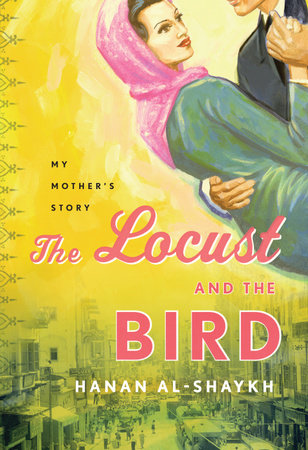The Locust and the Bird Reader’s Guide
By Hanan al-Shaykh


1. Movies play a key role in Kamila’s life and in this book. What did movies, especially The White Rose, represent for Kamila? Were they just a source of pleasure and escapism, or something more? Like books, movies are a powerful form of storytelling. What does The Locust and the Bird suggest about how stories shape and give meaning to Kamila’s and to our lives?
2. Have you read anything else by Hanan al-Shaykh? She is a novelist, primarily. What fictional elements do you think she brings to this book? Why did she decide to tell her mother’s story as a memoir rather than fictionalize it?
3. The author was abandoned by her mother when Kamila left her husband for her lover. Do you think telling this story was a way for the author to forgive her mother for that betrayal? In writing her mother’s story, was the author finally able to understand her mother, and thus forgive her?
4. Why does Hanan finally decide to tell her mother’s story? Why does she use her mother’s voice in the first person? How does this affect the reader?
5. Why are there two voices—Hanan’s in the beginning and ending and Kamila’s in the body of the book? Why does the author bookend the story with her own voice rather than her mother’s?
6. Though The Locust and the Bird is set in Lebanon in the mid-twentieth century, how is this a universal tale?
7. Page 302 features a segmant that describes Kamila as having “transformed her lies into a lifetime of naked honesty.” What does this mean and what does it say about Kamila?
8. Is Kamila an appealing, likable character? Which aspects of her personality do you identify with or like the most and which do you like the least? Did your reaction to her as a little girl affect your reading of her experiences later in the book? Would you have liked to have known her? Do you trust her, both as a person and as the narrator?
9. What are the roles of women in the story? Compare and contrast the various women: Kamila, her mother, Hanan.
10. How do the portrayals of Abu-Hussein, Kamila’s first husband, differ in the prologue (in Hanan’s voice) and the rest of the book (in Kamila’s voice)? Why?
11. Describe how Muhammad and Kamila court each other and fall in love, despite the difficulties presented by the Muslim community in 1930s Lebanon.
12. How does Kamila resist and fight the rules and traditions of the religion and the socioeconomic class into which she is born?
13. Why does Kamila choose romantic love over all else? Do you find her courageous or crazy to have given up so much for love?
14. Describe the family and society Kamila was born into and grew up in. Why does her mother (who is herself fairly brave in the beginning of the book) force Kamila to marry her own brother-in-law at age thirteen?
15. What does the author suggest about the relationship between past and present, and between national and personal history? What role does Kamila’s family history, and the stories of her childhood, play in shaping the adult Kamila? What is the influence of Lebanon’s political and historical events in the twentieth century?
16. What does the title mean? Who do you think is the locust, and who the bird? How do the title and the story of the locust and the bird connect with Kamila’s drawings, in particular the use of the rose and the dove at the end? What do Kamila’s drawings represent?
(For a complete list of available reading group guides, and to sign up for the Reading Group Center enewsletter, visit www.readinggroupcenter.com)
Just for joining you’ll get personalized recommendations on your dashboard daily and features only for members.
Find Out More Join Now Sign In